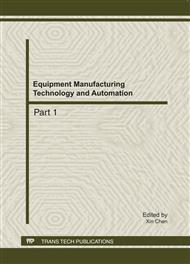p.2118
p.2122
p.2126
p.2133
p.2138
p.2144
p.2148
p.2152
p.2157
Synchronous Rectification Strategy for LLC Resonant DC-DC Converter
Abstract:
High efficiency /high power density is one of the hottest research spots in power electronics technique. Due to simple structure and high conversion efficiency, the LLC resonant DC-DC converter has great utilization potential in many application areas. To improve the conversion efficiency and the power density further, synchronous rectifier is widely adopted at the secondary-side. Based on the existed synchronous rectified LLC resonant DC-DC converter reviewed in this paper, advantages and disadvantages are analyzed and compared in detail. A novel primary-side current sensing strategy and a new current driving method for voltage-doubler rectifier are presented. Finally, this paper proposes a family of novel single package structure for synchronous rectifier from the view point of power electronics integration to improve the performance further.
Info:
Periodical:
Pages:
2138-2143
Citation:
Online since:
August 2011
Authors:
Price:
Сopyright:
© 2011 Trans Tech Publications Ltd. All Rights Reserved
Share:
Citation:


